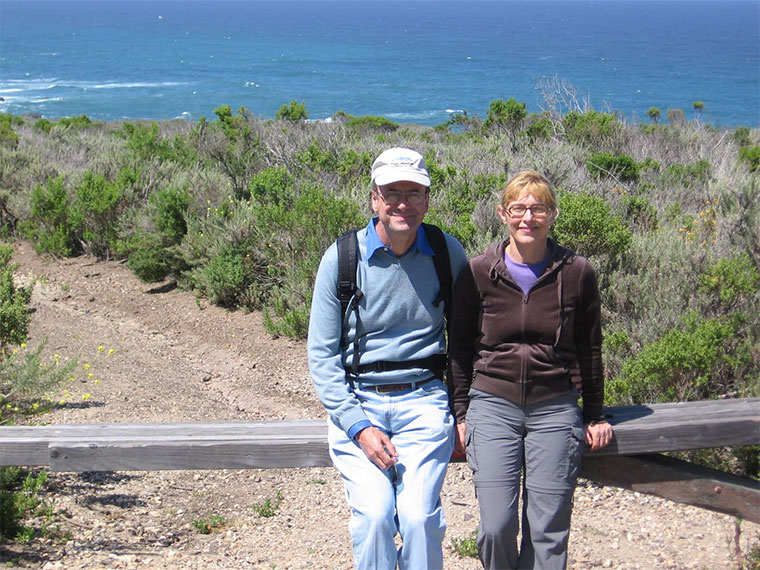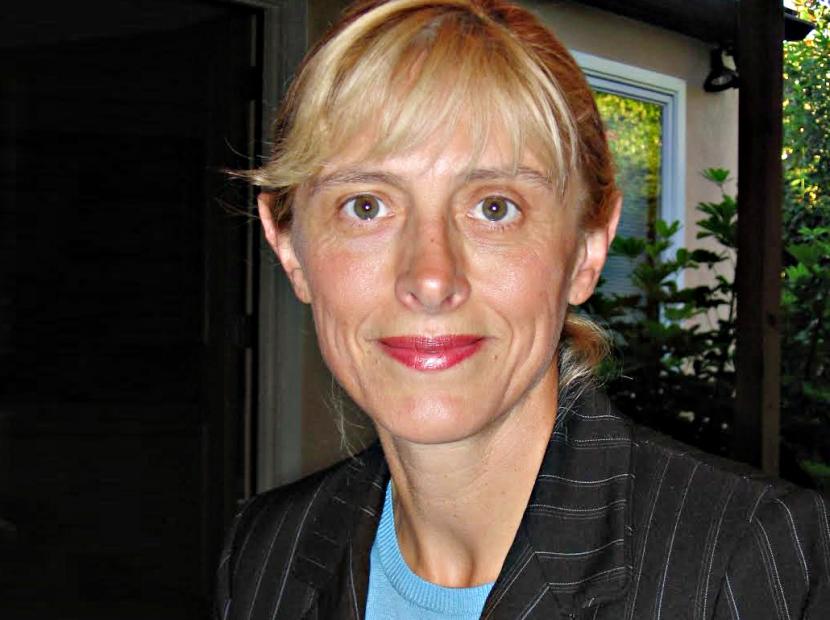Time ago, there was a girl running freely along green hillsides and valleys. Since an early age, she was not afraid of animals, but, rather, intrigued by Nature.
Her name was…Heidi. Actually, no, I’m sorry to disappoint Johanna Spyri’s fans, but that’s a different story!
I’m referring to Cinzia Zuffada, Associate Chief Scientist at NASA’s Jet Propulsion Laboratory (JPL), in Pasadena.
What I really find remarkable is that, as a grown-up, she still has sparkles in her eyes, while explaining to me her ongoing scientific research.
As a child, was there a specific episode, which drew you closer to science? What’s your cultural background?
I grew up in Broni, a small village in the Province of Pavia (in the Italian region of Lombardy), surrounded by the wilderness and hillsides, covered by lots of trees and vineyards.
Being close to Nature, provided me with a curiosity to observe, to explore and to learn.
My mom and dad used to run a small business together. They were born in the 30’s and experienced a childhood of hardship, during WWII.
Since my parents lacked a proper education, they attached great importance to my learning process and I quickly absorbed that mindset. Early on, I visualized myself as an independent individual and set out to make it on my own.
In the 70’s, I enrolled in Engineering, in Pavia, and I was among the first women in my hometown graduating from that field of studies. I never thought about becoming a teacher, the traditional career path for women, but wanted to have the widest range of opportunities. I was not afraid of the challenges on my path.

How was your adjusting process to Los Angeles?
In the early 80’s, upon obtaining a fellowship from the National Research Council (or CNR – Consiglio Nazionale delle Ricerche), I came to the U.S., as a postdoc at the California Institute of Technology (Caltech).
Instead of that being a step forward towards my academic career, it represented a turning point, which “rerouted” me away from academia.
Even if the intellectual and scientific standard at Caltech was high, I was shocked to see very few women in my field. I felt extremely isolated, uncomfortable and “discriminated”, in the sense that my male peers hardly wanted to interact with me.
In the Italian academic setting, I had never felt that way. I had achieved success in my studies and, always, felt at ease.
Even if I would have liked to pursue an academic career in the U.S., it was not possible, without the right network of professional acquaintances.
My ultimate choice of staying here, was determined both by the higher range of career opportunities and by having met my future husband.
Overall, it took me ten years to put down roots in L.A.
What makes the measurement technique of “GPS Ocean Reflectometry” a significant progress from previous measuring systems?
It constitutes a change of paradigm, by employing the GPS signal, which is out there and has nothing to do with the remote sensing of the Earth.
In jargon, we call it “signal of opportunity”, because of its reliability. Lots of countries have developed their own transmitters, which all have similar characteristics.
By employing user-designed receivers, which capture the signal, after it is reflected off the Earth’s surface, you can have lots of measurements, which repeat very frequently.
The receivers are relatively inexpensive, because this instrumentation is a lot simpler than traditional remote sensing systems.
With the evolution and affordability of small spacecraft, we can deploy constellations of GPS receivers, for the collection of signals.
Could you define “GPS occultation” for us? What was your contribution to this field?
GPS occultation is a more mature field than GPS reflectometry. The planetary occultation goes back to the sixties, as a way of measuring the characteristics of planets’ atmosphere.
Spacecraft, orbiting around planets, to perform several kinds of scientific surveys, transmit back to Earth and, thus, can generate “occultation”.
A GPS occultation takes place when a space-based receiver is coming into view, or losing view, of a GPS transmitter. In other terms, the occultation consists in the “link” between the transmitting GPS satellites and the correspondent receivers (on satellites, or airplanes and other platforms).
In such configuration, the path of propagation traverses the most of Earth’s atmosphere, whom you’re probing.
As the transmitting and receiving systems are traversing the lowest portion of the Earth’s atmosphere, called “troposphere”, up to the upper part, called “ionosphere”, they provide profiles of atmospheric refractivity from which temperature, water vapor and total electron content can be retrieved.
Communities of meteorologists around the globe are assimilating the data, provided by such a cost-effective technique. As a consequence, the accuracy of forecast skills has been rising dramatically.
On the other end, reflectometry is a relatively newer and experimental field. Only a few years ago, NASA funded the development of a mission, consisting in a constellation of eight small satellites, able to measure hurricanes’ intensity, by gaging the wind speed in the atmospheric portion over the oceans.
My field of expertise deals with another application of this technique, that is measurement of sea surface topographical heights.
Reflectometry is also used in experiments to assess the properties of the land, such as the moisture in the soil, and the characteristics of ice.
What are your day-to-day activities, as Associate Chief Scientist at the Jet Propulsion Laboratory (JPL)?
I’ve been the Associate Chief Scientist at JPL, for over nine years. As part of the Office of the Chief Scientist, I work in conjunction with our sister organization, the office of the Chief Technologist.
We fulfill a leadership role to advise the director on the main objectives for science and technology at JPL, and also inform and manage the program of internal research and development.
We have to ensure that we support both original and rigorous scientific/technological work, which has also to be relevant to the future of JPL, as a whole.
The office is also in charge of academic collaborations: we look both at excellent students, and leaders from universities, interested in partnerships with NASA.
Last but not least, I work closely with postdoctoral fellows at JPL. On average, they spend three years in our Lab. Then, some are hired, while some others move on to different institutions, in which they pass on what they’ve learned with us and establish the foundation for future connections and collaborations.
What are you working on, right now, and what’s your agenda for 2016?
I’m involved with the selection of new proposals of internal projects, to be funded starting next year.
Simultaneously, I’m reviewing existing work, to make sure that it is successful, and that scientists operate accordingly to their declaration of intents.
I’m also furthering my research on GNSS reflectometry. The NASA’s division of Earth Science is undergoing its “Decadal Survey”, which involves the community, with the aim of identifying the top priorities for the next decade.
As I’m approaching the final stage of my career, I feel the responsibility of passing on as much as I can to the next generation of researchers.
Global warming and climate change are giving us alarming signs. In your opinion, what’s more challenging, between persuading people to change their habits and convincing politicians/corporate executives that sustainability doesn’t entail loss of profits?
From the standpoint of an institution, like JPL, we produce data, which help the scientific community to better understand what is going on.
Another aspect consists in trying to figure out how we can go from those data, understandable to scientists, to a different type of information, which may help decision makers take steps, impactful on local realities, as well as at the government level.
As a member of our society, I feel that there is a need for developing simpler and cheaper solutions to make needed global measurements, and I’m glad to make my part in that.
Do you have contacts with the local Italian-American community?
Certainly, I have contacts with the consulate and I’ve taken part to some of its initiatives, as well as some events, organized by the Italian Cultural Institute of L.A.
Besides, I meet occasionally with the consistent number of Italian researchers at JPL, but everybody is busy pursuing his or her specific activity of research.































